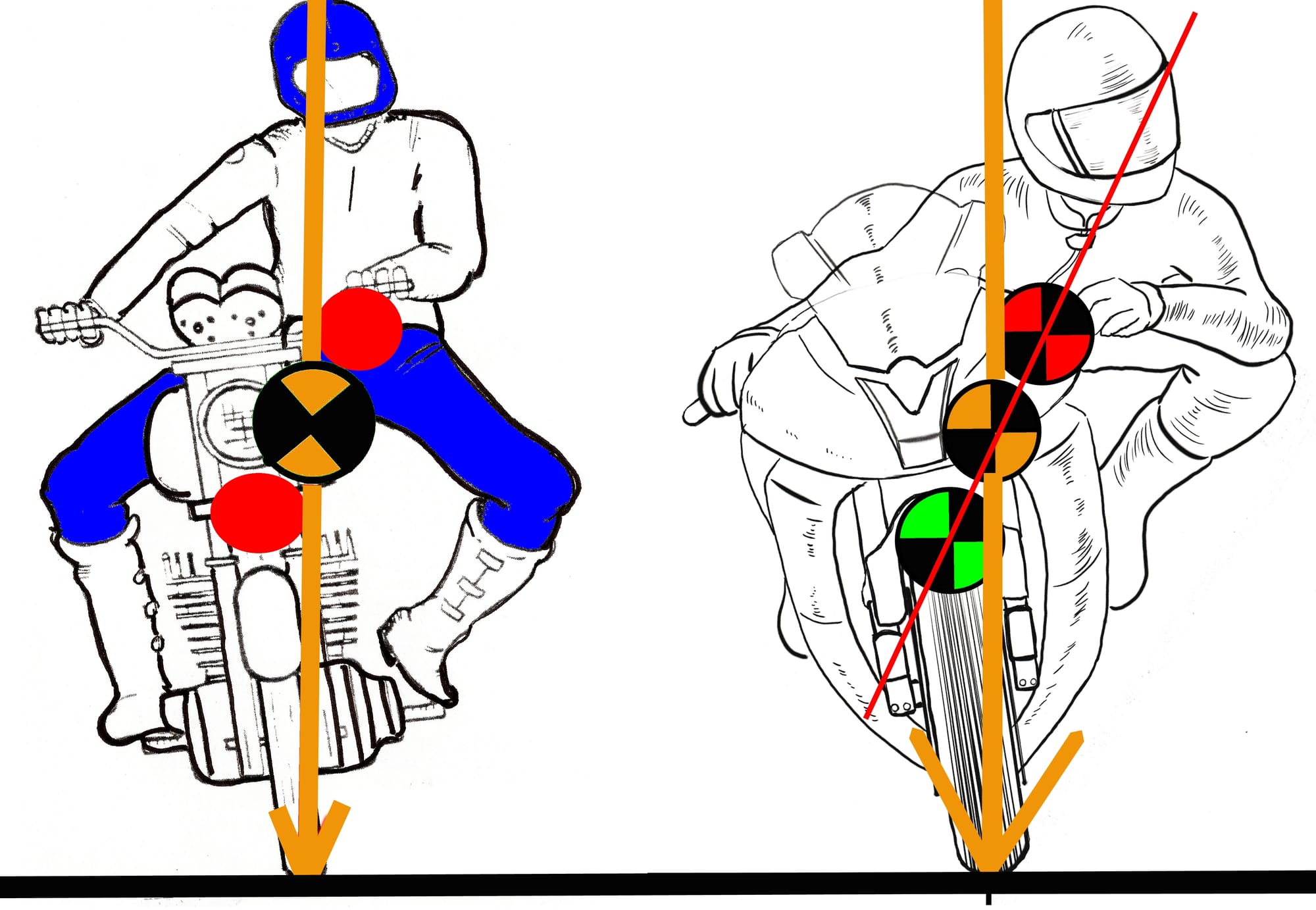Contact patch size VS BP

Tire Contact Patch Size Change from Lean Angles
A common claim by well-meaning mentors to new riders is that Body Position (BP) or shifting the rider’s weight to the inside of the turn will result in a larger contact patch surface area. The theory then goes on to state that the larger surface area will generate more traction.
Unfortunately, this theory has two major problems. First, it contradicts an engineering principle about tires. Second it breaks a well-known and accepted law of physics.
From an engineering standpoint the tire contact size and shape are determined by weight and load on the tire. These forces are absorbed by the internal tire pressure.
For a bike traveling in a straight path the surface area is a result of total weight on the tire divided by the tire pressure (PSI). As far as BP goes, no matter how the rider sits on his bike, the total weight of the bike and rider are the unchanged. With the weight unchanged the size of the surface area is also unchanged.
There is no magic way to sit on a bike to get more traction!
First let’s look at the engineering principles of a tire.
Granted when a rider moves his weight off center the apparent lean angle of the chassis will change a little. If a bike is traveling straight when the rider hangs off it will actually lean in the opposite direction then the rider. No matter the type of bike, old, new, standard or sport-bike, the physics are the same. (Figure 1) Notice, the "Combined Center of Gravity", of bike and rider, (Orange Dot) is still in a position directly above the tire contact patch and pulling straight down.
 Figure 1
Figure 1
Remember, gravity always pulls straight down both, while traveling straight and cornering. Cornering doesn't change the pull of gravity, it only adds a lateral force from inertia. Granted that with the bike at a slight lean, the shape of the contact patch maybe slightly changed but, the total weight, on the tires, has not changed. A change in shape, alone, has very little effect on the traction of the tire. With the same weight, the surface area size will not change from changes in BP.
There is a diagram floating around social media, showing the different shapes and sizes of the contact patch at different lean angles. (Figure 2) This was obviously a diagram developed in a motorcycle tire engineering dept. I will accept it as an accurate representation of what happens to a tire contact area while cornering.
You can see as the tire leans further the tire deforms more and tends to increase in area size.
 Figure 2
Figure 2
Well-meaning mentors are using this diagram to prove their point about changes in contact size from BP changing the lean angle. That’s where the confusion comes from. This diagram shows changes in lean angle from higher cornering speed and higher cornering forces, not from an artificial change in lean, strictly from BP. As matter of fact is, the diagram actually shows, a smaller lean angle has a smaller contact patch.
Which is just the opposite of the common advice floating around. I.E., "Straightening the bike up will put the tire on a larger contact patch"
No matter how aggressive the rider’s BP is it will not change the cornering forces.
Cornering forces are from speed and radius not BP!
"Body Position, alone, will not change the size of the contact patch"
To learn about the change in friction from larger contact patch, read the accompanying article, “Formula-For-Friction”